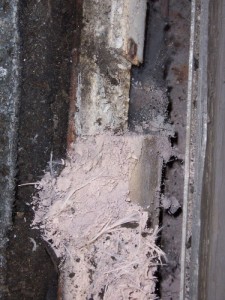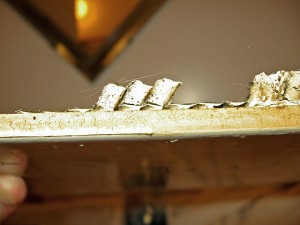Asking the question “What is asbestos?” is not as straight forward as you might think. Believe it or not, there are many different types of asbestos. Firstly, asbestos is a naturally occurring fibrous material which was used in buildings up until the 1980s, and it is still found in homes, schools, office blocks and hospitals today.
Generally asbestos lurks in products such as insulation, ceiling tiles, pipe insulation, boilers and sprayed coatings. Using asbestos in residential buildings was very common in Australia, along with other countries, between the 1940s and the 1980s, before all production of the material ceased.
What Do I Really Need To Know About Asbestos?

Examples of friable asbestos materials:
- Sprayed on fire retardants
- Insulation and sound proofing
- Lining of domestic heaters, stoves, hot water systems and pipe insulation
- Backing material on floor tiles and vinyl flooring
What Is Bonded Asbestos?

Example of bonded asbestos:
- Downpipes
- Corrugated sheeting
- Ceiling and roofs
- Fencing
- Wall cladding
- Textured paint
- Fibro
- Floor tiles
Asbestos Facts
Who Is At Risk?
Anyone who disturbs asbestos that has been damaged or deteriorating over time, which in turn releases airborne fibres you may breathe in working on a day-to-day basis. It can be very difficult to identify asbestos as it is almost always mixed with other materials.
Is Asbestos Really A Killer If Disturbed?
Yes, all asbestos types are dangerous. While some are more dangerous than others, all are hazardous. Leading health experts and agencies around the world, including the Department of Health and Safety in Australia, deem asbestos to be cancer-causing substances, such as lung cancer, ovarian cancer, laryngeal cancer and loads of other serious diseases. However if it is in a building or a house, and as long as it is in good condition and is not going to be disturbed or damaged, the asbestos does not pose a risk.
How Do I get Bonded Or Friable Asbestos Removed?
All asbestos removing should only be carried out by a licensed contractor.
Removing asbestos is a hazardous job and as a result, workers who are employed in removing higher ACMs require specific training and follow specific working practices. Asbestos removers also use sophisticated respiratory protective equipment.
There are also some asbestos removal jobs that aren’t quite as hazardous, as the materials found in the asbestos don’t pose a significant risk, however only a professional will know this. This kind of removal does not require a licenced contractor, provided the necessary precautions are taken.
If you would like more information on bonded or friable asbestos or a free asbestos removal quote, call today and one of our experts will be in touch 0406 426 144.